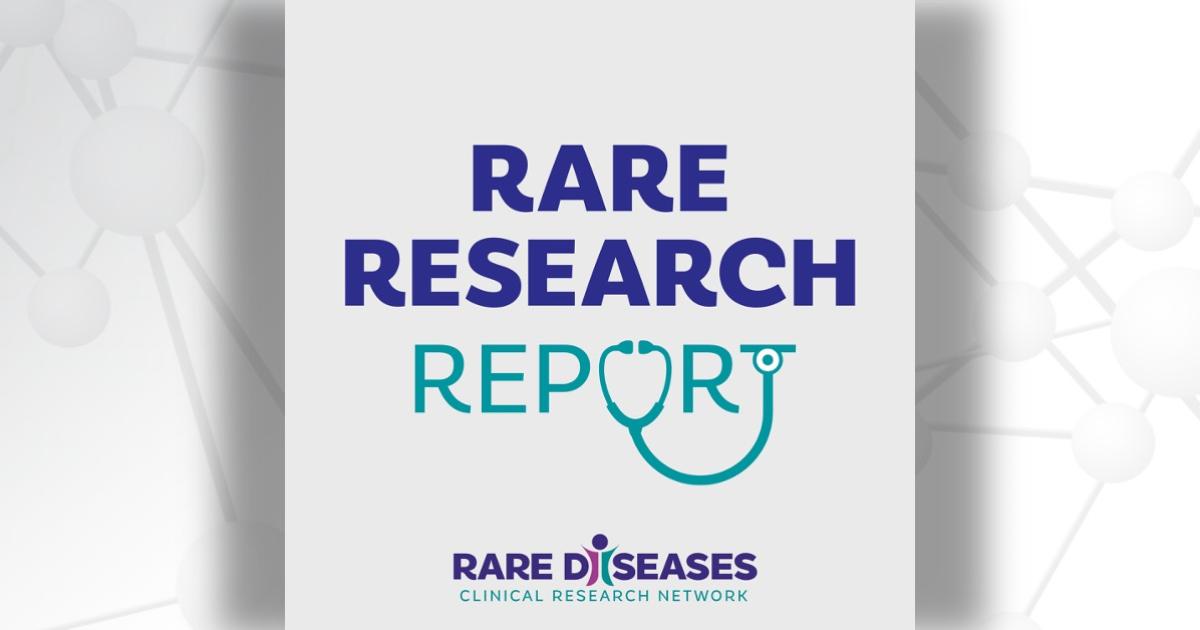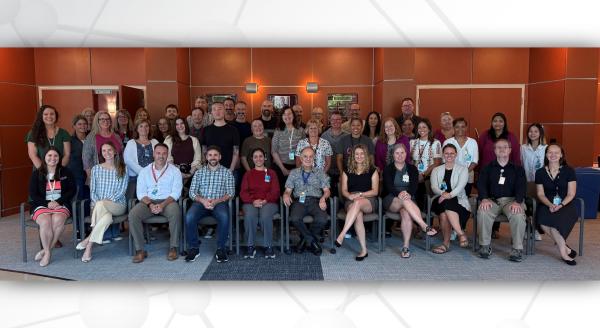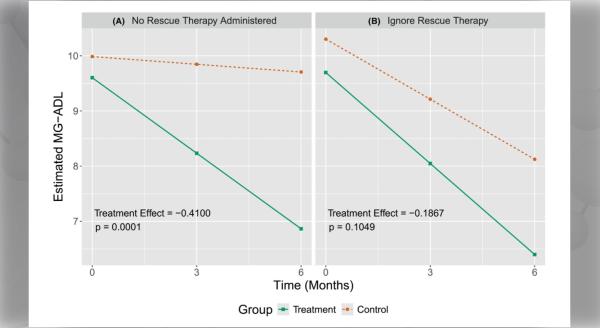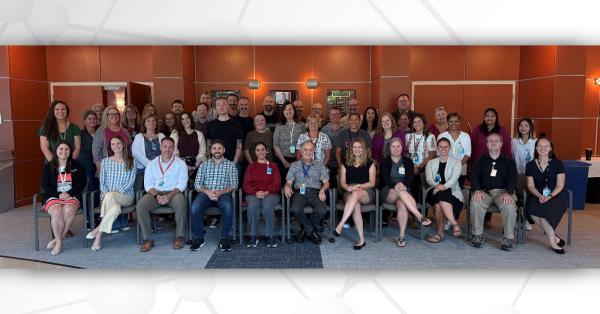Each month, we share summaries of recent Rare Diseases Clinical Research Network (RDCRN) grant-funded publications. Catch up on the latest RDCRN research below.
Jump to:
- Consortium of Eosinophilic Gastrointestinal Disease Researchers (CEGIR)
- Dystonia Coalition (DC)
- Genetic Disorders of Mucociliary Clearance Consortium (GDMCC)
- Global Leukodystrophy Initiative Clinical Trials Network (GLIA-CTN)
Listen to these summaries on the Rare Research Report podcast.
Consortium of Eosinophilic Gastrointestinal Disease Researchers (CEGIR)
Investigating the Effects of Eosinophilic Esophagitis on Esophageal Tissue
Eosinophilic esophagitis (EoE) is a disorder in which eosinophils (white blood cells of the immune system) build up in the esophagus (the tube that carries food from the mouth to the stomach), causing tissue damage. The nature of the involvement of esophageal tissue has been unclear.
In this study, the investigators estimated the intrabiopsy site agreements of an established EoE histologic scoring system (EoEHSS) in the esophageal epithelial and lamina propria and examined if the disease activity status influenced the intrabiopsy site agreement. Comparisons were made between proximal:distal, proximal:middle, and middle:distal esophageal biopsy sites.
Results show that except for the extent of dilated intercellular spaces in inactive EoE, epithelial features and lamina propria were unevenly affected across esophageal biopsy sites, regardless of disease status. Authors note that these findings enhance our understanding of the effects of EoE on esophageal tissue pathology.
Hiremath G, Sun L, Collins MH, Bonis PA, Arva NC, Capocelli KE, Chehade M, Davis CM, Falk GW, Gonsalves N, Gupta SK, Hirano I, Leung J, Khoury P, Mukkada VA, Martin LJ, Spergel JM, Wechsler JB, Yang GY, Aceves SS, Furuta GT, Rothenberg ME, Koyama T, Dellon ES. Esophageal Epithelium and Lamina Propria Are Unevenly Involved in Eosinophilic Esophagitis. Clin Gastroenterol Hepatol. 2023 Oct;21(11):2807-2816.e3. doi: 10.1016/j.cgh.2023.03.014. Epub 2023 Mar 24. PMID: 36967100; PMCID: PMC10518022.
Dystonia Coalition (DC)
Using a Data-Driven Approach to Classify Isolated Non-Focal Dystonia
Dystonia is a neurological disorder characterized by excessive muscle contractions leading to abnormal postures, movements, and pain. Any region of the body can be involved, either in isolation or in combination with another region of the body. Although accurate classification of these combinations is important to providing care, it can sometimes be inconsistent.
In this study, researchers used a data-driven clustering approach to investigate which combinations are most common in dystonia. The team analyzed 1,618 participants with isolated non-focal dystonia from the Dystonia Coalition database to explore which body regions were affected together.
Results reinforce common patterns in cranial and cervical regions. However, findings also show unexpectedly strong associations between bilateral upper or lower limbs, revealing new patterns that may represent an underrecognized dystonia subtype.
Younce JR, Cascella RH, Berman BD, Jinnah HA, Bellows S, Feuerstein J, Wagle Shukla A, Mahajan A, Chang FCF, Duque KR, Reich S, Richardson SP, Deik A, Stover N, Luna JM, Norris SA. Anatomical categorization of isolated non-focal dystonia: novel and existing patterns using a data-driven approach. Dystonia. 2023;2:11305. doi: 10.3389/dyst.2023.11305. Epub 2023 Jun 8. PMID: 37920445; PMCID: PMC10621194.
Genetic Disorders of Mucociliary Clearance Consortium (GDMCC)
Characterizing the Histopathology of Primary Ciliary Dyskinesia-Related Chronic Rhinosinusitis
Primary ciliary dyskinesia (PCD) is an inherited condition in which mucociliary clearance of the lungs is impaired, leading to accumulation of harmful particles and pathogens trapped within mucus. In addition to lung disease, this results in chronic rhinosinusitis, where the lining of the sinuses becomes swollen, creates extra mucus, and interferes with drainage.
In this study, researchers characterized the histologic change (microscopic changes in tissues) of PCD-related chronic rhinosinusitis (PCD-CRS) in individuals with PCD who underwent sinus surgery. The team compared tissue samples from patients with PCD-CRS to those with cystic fibrosis-related chronic rhinosinusitis (CF-CRS), routine chronic rhinosinusitis without nasal polyps, and healthy controls.
While sinus disease is generally mediated by eosinophils (a specific white blood cell) in PCD-CRS, neutrophils were the dominant immune cell in sinus tissue, similar to CF-CRS. As targeted therapies become available for CRS, understanding the pathogenesis of PCD-CRS becomes increasingly important.
Kim S, Li L, Lin FC, Stack T, Lamb MM, Mohammad I, Norris M, Klatt-Cromwell C, Thorp BD, Ebert CS Jr, Masters D, Senior BA, Askin FB, Kimple AJ. Histologic characterization of primary ciliary dyskinesia chronic rhinosinusitis. Int Forum Allergy Rhinol. 2023 Nov 23. doi: 10.1002/alr.23303. Epub ahead of print. PMID: 37997295.
Global Leukodystrophy Initiative Clinical Trials Network (GLIA-CTN)
Adrenoleukodystrophy (ALD) is an X-linked disorder (on the X chromosome) characterized by accumulation of very long-chain fatty acids throughout the nervous system, adrenal glands, and testes. Males with ALD have a high risk of developing adrenal insufficiency, which can be life-threatening when undetected. Although newborn screening for ALD is becoming more common, its impact on clinical management has not yet been reported.
In this study, researchers investigated the impact of newborn screening on time to diagnosis of adrenal insufficiency in children with ALD. The team conducted a medical chart review of 116 patients with ALD, extracting information about diagnosis in all patients and adrenal insufficiency surveillance, diagnosis, and treatment in boys with ALD.
Results suggest that implementing newborn screening for ALD leads to significantly earlier detection of adrenal insufficiency, as well as earlier initiation of glucocorticoid supplementation in boys affected by ALD.
Ramirez Alcantara J, Grant NR, Sethuram S, Nagy A, Becker C, Sahai I, Stanley T, Halper A, Eichler FS. Early Detection of Adrenal Insufficiency: The Impact of Newborn Screening for Adrenoleukodystrophy. J Clin Endocrinol Metab. 2023 Oct 18;108(11):e1306-e1315. doi: 10.1210/clinem/dgad286. PMID: 37220095.
The Rare Diseases Clinical Research Network (RDCRN) is funded by the National Institutes of Health (NIH) and led by the National Center for Advancing Translational Sciences (NCATS) through its Division of Rare Diseases Research Innovation (DRDRI). Now in its fourth five-year funding cycle, RDCRN is a partnership with funding and programmatic support provided by Institutes, Centers, and Offices across NIH, including the National Institute of Neurological Disorders and Stroke, the National Institute of Allergy and Infectious Diseases, the National Institute of Diabetes and Digestive and Kidney Diseases, the Eunice Kennedy Shriver National Institute of Child Health and Human Development, the National Institute of Arthritis and Musculoskeletal and Skin Diseases, the National Heart, Lung, and Blood Institute, the National Institute of Dental and Craniofacial Research, the National Institute of Mental Health, and the Office of Dietary Supplements.






